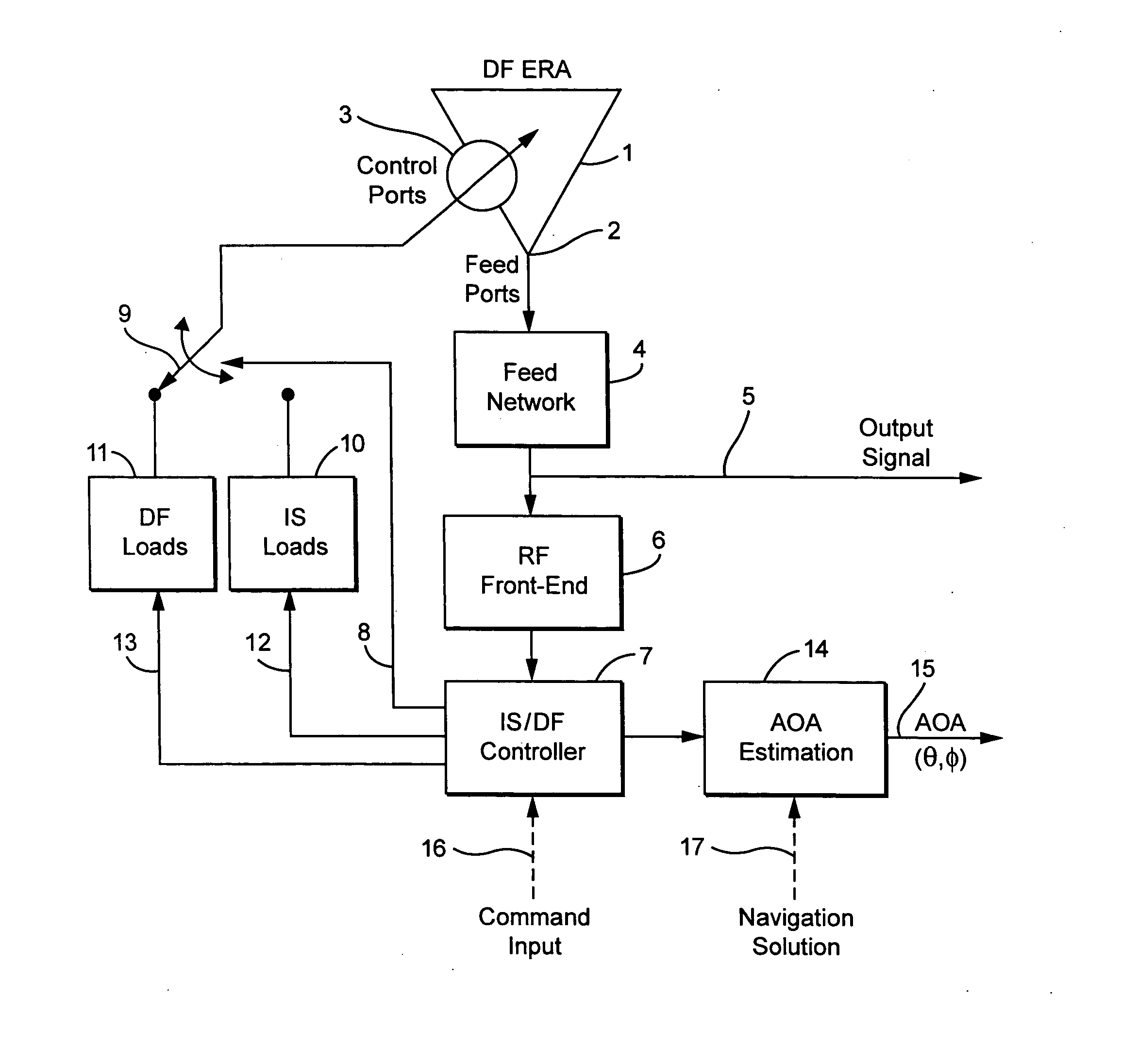Compact antenna system for polarization sensitive null steering and direction-finding
a polarization sensitive, compact technology, applied in the field of antennas, can solve the problems of partial cancellation of signal strength, signal fade or dropout, interference or jamming, etc., to enhance the tolerance of jammer to signal (j/s) of the receiver, enhance the utility and performance of the exemplary df antenna system, and mitigate the adverse impact of interference or jamming.
- Summary
- Abstract
- Description
- Claims
- Application Information
AI Technical Summary
Benefits of technology
Problems solved by technology
Method used
Image
Examples
Embodiment Construction
[0031] As shown in FIG. 1, in a perhaps simplest exemplary embodiment, the direction-finding and interference suppression (DF / IS) system described here may include a compact electronically reconfigurable multimode direction-finding antenna with both feed and appropriately placed control ports embedded in its aperture, a feed network, an RF front-end, microcontroller, feedback control electronics, and controllable loads attached to the control ports. While the DF capability is inherent in the choice of the multi-mode spiral antenna (Corzine et al. [1990]), the DF performance is improved through careful design of a fixed set of control loads and the optimal location of the control ports. Interference suppression is achieved through an alternative set of variable control loads that are adjusted in response to a reference signal. In spread spectrum systems this reference signal can simply be the measured power in the frequency band of interest. Alternating between the two operational mo...
PUM
 Login to View More
Login to View More Abstract
Description
Claims
Application Information
 Login to View More
Login to View More - R&D
- Intellectual Property
- Life Sciences
- Materials
- Tech Scout
- Unparalleled Data Quality
- Higher Quality Content
- 60% Fewer Hallucinations
Browse by: Latest US Patents, China's latest patents, Technical Efficacy Thesaurus, Application Domain, Technology Topic, Popular Technical Reports.
© 2025 PatSnap. All rights reserved.Legal|Privacy policy|Modern Slavery Act Transparency Statement|Sitemap|About US| Contact US: help@patsnap.com



